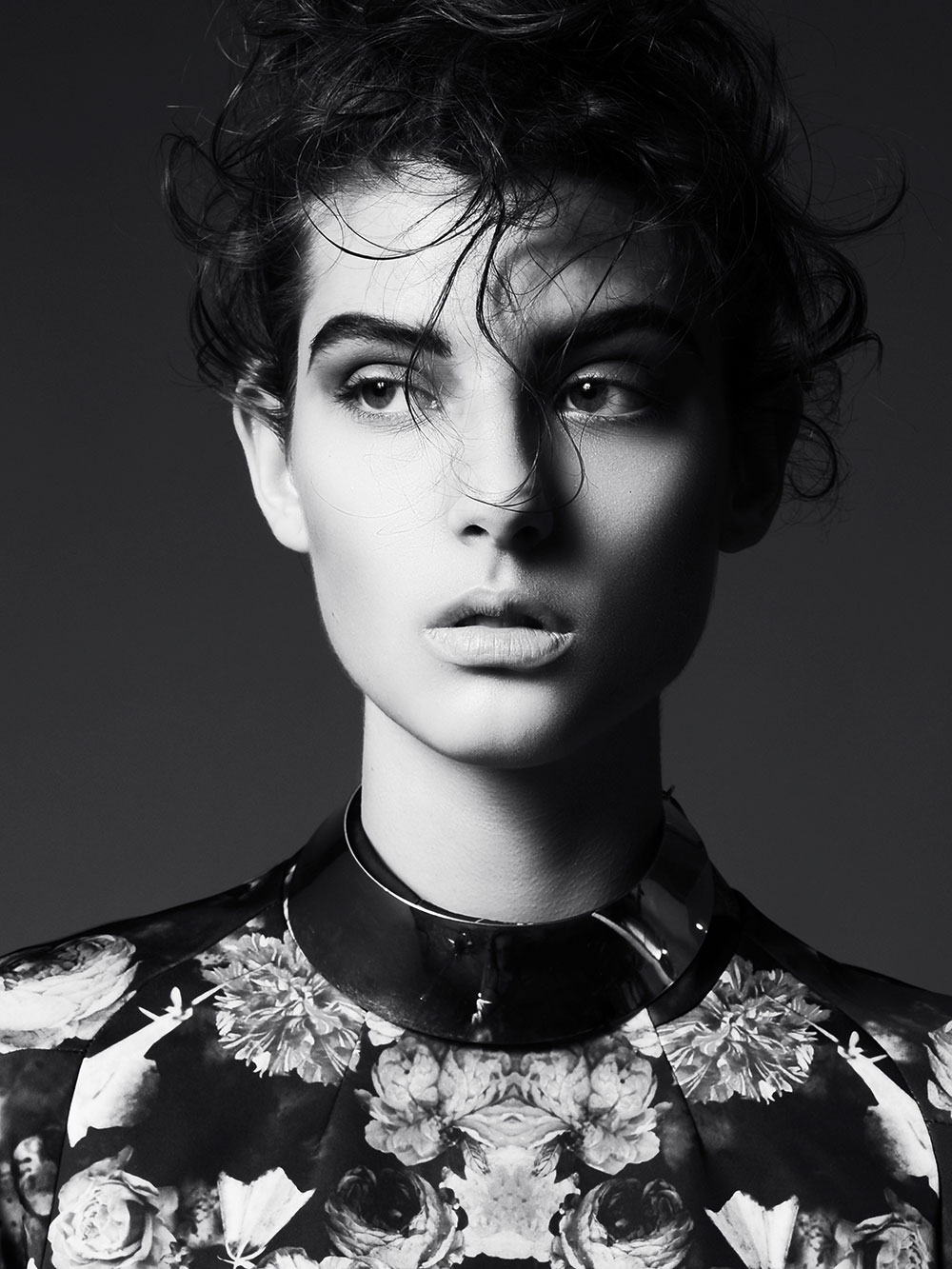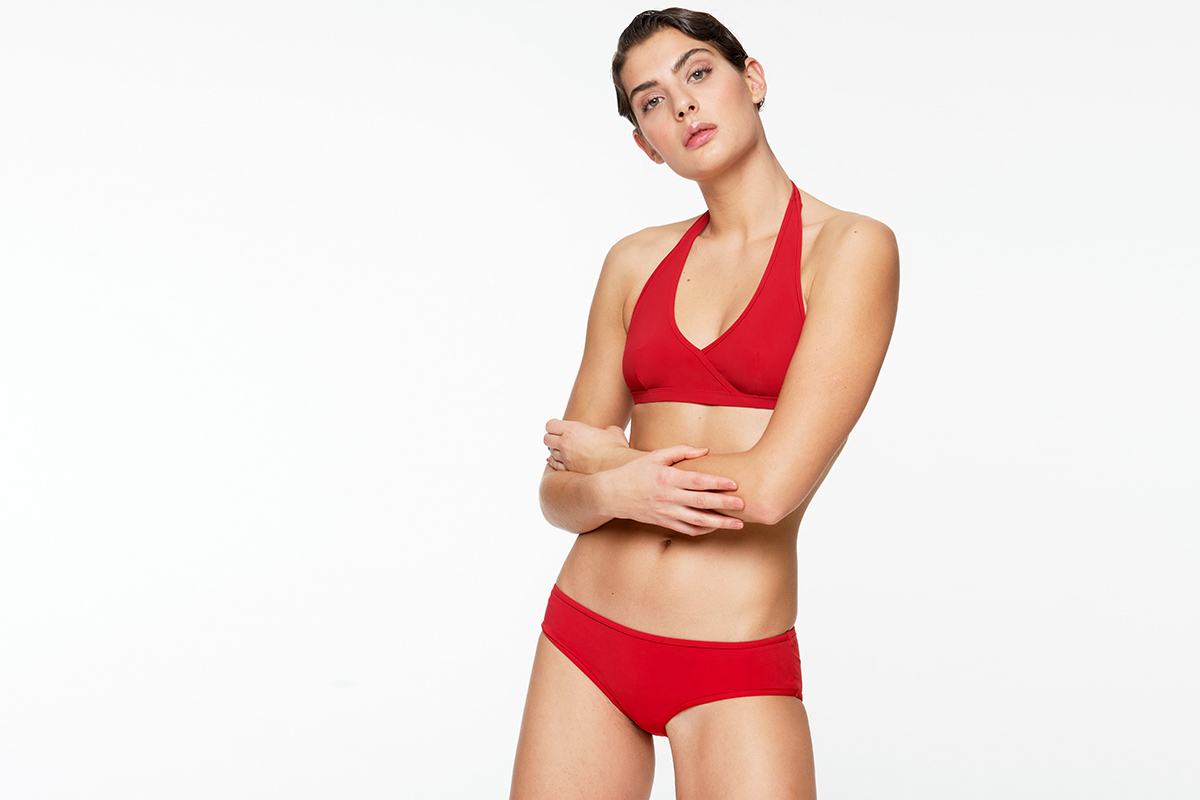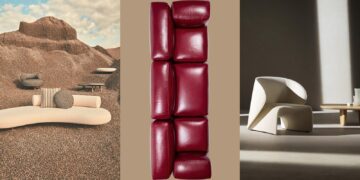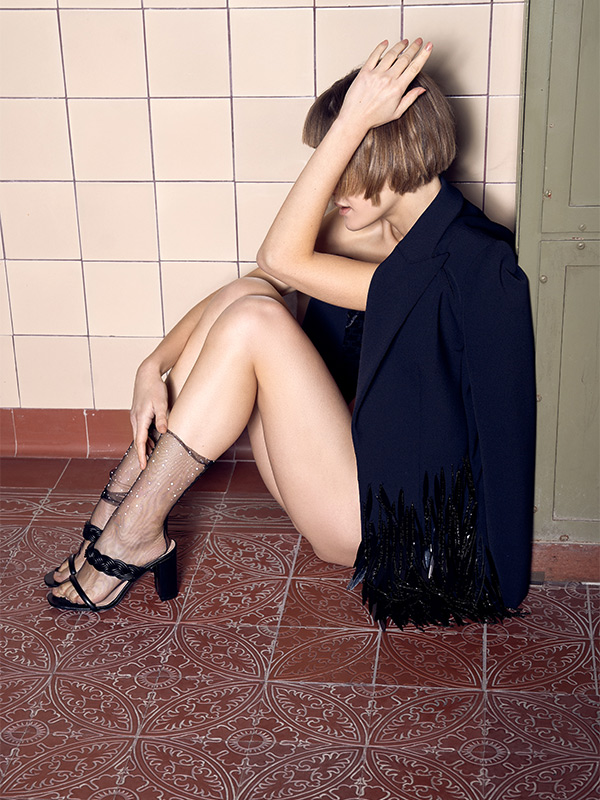So young and yet Manuela Frey and Lejla Hodzic are already old hands in the modeling industry in their mid-20s. Winning the Elite Model Look Switzerland has propelled them onto the international catwalks and the covers of numerous magazines. Ten years in the business and a quiver full of stories about what the modeling dream actually looks like: FACES listens.
Photos © OM Option Model Agency
FACES: How did you two meet?
Lejla Hodzic: I took part in the Elite Model Look in 2010 and was on the show in 2012 when Manuela was one of the candidates. She then approached me – with so much enthusiasm and joy that I couldn’t miss her.
Manuela Frey: Modeling was my dream back then, which is why I followed all the Elite Model Look contests. Lejla was a great role model for me.
LH: I remember you, you had such incredibly long hair!
MF: My hair was long and thick back then. One year and numerous shows and shoots later, that was no longer the case. (laughs)
F: You were also in New York together when you lived and modeled there, and you always supported each other. Is this normality for the modeling business?
MF: Of course you’re a lone fighter, but you still make friends with other models, whom you also love with all your heart.
LH: For me, model friendships were often an additional burden in my free time because there was always just one topic: when is the next casting, who gets the job, who eats what and how, who is successful and who is not. There’s a lot of pressure and I wanted to put my job aside from time to time and just be me. Manuela was better able to deal with this than I was and was therefore a great support for me.
F: In New York, models live together in shared flats. How should we imagine this?
MF: Each agency has its own model apartments, in which between five and ten models live. You are then allocated somewhere and pay around 2,000 francs for your room, even if the apartment may only cost twice as much. The agency even earns money from you. I wouldn’t have been able to afford another room back then – the agency advances you the money, even pays you pocket money and then deducts this amount from your wages. As a newcomer, you naturally fall into the red and then have to make up for it with your jobs. I was under 18 at the time and had to live in an apartment like this anyway, and I also needed a special visa. At that time, I often had to lie about my age because you were only allowed to walk on the catwalk from the age of 16. Today it is even forbidden to go to New York as a model at the age of 16.
F: And how was the interaction between you and the roommates?
LH: There were actually some people who cut off other people’s hair before an important job or casting.
MF: Many didn’t want to reveal which castings they had or which jobs they were currently traveling to.
LH: There is a lot of resentment. There were always comments like “I didn’t think you would fit into their clothes”. If you’re as young and sensitive as I was back then, you’ll go under.
F: Many models are recruited at the age of 14 or 15. Why?
MF: You have to start building your career as early as possible. You are also thin and have no feminine curves. Incidentally, this is also the reason why you start out as a model on the catwalk and only shoot campaigns later: Because you still have a much more childlike body at the beginning.
F: What did you enjoy the most?
MF: The traveling, all the great moments and the support I received. The hardest thing for me back then was being away from home, even though I loved New York so much. Of course it was brutal to be separated from the family. I often cried and spent five hours a day talking to my mom on Facetime.
“Everyone is crying out for personality, but they don’t want too much of it.”
F: Did your idea of a modeling career that you had at the beginning come true?
MF: I imagined it to be completely different, much more glamorous and simpler. Nothing is presented to you on a silver platter. After winning the Elite Model Look Switzerland 2012, I was so happy and imagined that Chanel, Dior and co. would book me directly, without any casting. (laughs) I got to know the real modeling life in New York.
LH: That’s where I differ from Manuela. I had my problems with this world right from the start, especially because my measurements were constantly criticized.
F: What dimensions are required?
LH: Your hip circumference must be less than 90 centimeters, which roughly corresponds to the hip of a twelve-year-old child. After my victory, plans were quickly made: You’re going to the world final of the Elite Model Look, then to Paris and New York and in between you have to lose seven kilos. That totally damaged my self-confidence.
MF : I was 1 meter 80 tall and weighed 49 kilograms when I won the Elite Model Look Switzerland. That’s why I went on my very first diet and lost an extra five kilos, because I was told that was important to be successful. The problems came when I was around 18 years old, when I was told more and more often that I was too fat. Losing weight quickly didn’t work as well as it used to, and I was sometimes sent home from jobs because my pants didn’t fit. I didn’t really feel pretty during this time.
F: How did you get out of that spiral?
MF : Thanks to my dad, who threw my scale out the window, fed me Nutella sandwiches and told me he wouldn’t allow me to go back to New York, I shouldn’t be gaining weight now.
F: Essense is a constant topic. How do you estimate the percentage of models who have some form of eating disorder?
LH: 80 percent. It’s not just about achieving certain dimensions, but also about maintaining them. You automatically worry about what you eat and how much of it.
MF: The criticism is always there, and it’s harsh. When I was measuring up in Paris, I was once approached: “Do you eat pizza? Do you eat pasta?” I said no to both. Then she asked: “Do you work out? How many times a week?” Me: “Three to four times.” And she: “Why the fuck are you so fat?!”
LH: I find that particularly bad, because Manuela has always paid attention to a healthy diet and has always eaten her carrots with hummus.
MF: Of course there are also models who have simply been genetically lucky and don’t have to worry about it. I’m glad I was built up by the Elite Model Look. Russian models experience a much tougher everyday life because modeling is often the only way for them to earn money. The drill is great and the expectation is clear that they have to send all the money they earn home to their families straight away. The difference between us and them is that we were clearly told what we had to do to be successful, but unlike other models, we weren’t forced to do anything.
F: It’s not just the measurements that are a constant problem, but also getting older. Are you afraid of ageing?
LH: I love it! I have never felt so comfortable in my body as I do right now. I have no idea when I last climbed onto a scale. Every age is beautiful, and it is so important to mature mentally too.
MF: I’m not at all afraid of getting older. I had a great career on the catwalk, but now I’d rather build something up in Switzerland instead of spending so much money on an apartment in New York and running from casting to casting.
F: Diversity is also a big issue on the catwalk.
LH: In percentage terms, we are still nowhere. Plus-size models also have to have the right proportions, and I doubt whether that is still possible under plus-size.
MF: Plus-size modeling is exhausting. Diet is important, as is exercise, because the overall picture has to be just as good as that of a normal model. One of my friends decided to model plus-size and regularly complained that she had to eat a banana with peanut butter every hour to keep from losing weight.
LH: I very much welcome the fact that something is happening with regard to skin color, even if we still have a long way to go.
MF: When we used to stand on the catwalk, the picture was clear: all the models were white. There might have been a Chinese woman at one in five shows, but black models weren’t booked anyway. Today, the circle is opening up a little, but models who don’t conform to this 08/15 style have an even more difficult time because they are then at most the one exception per show between the all-white-90-60-90 models.
F: What is your recipe for making it in this industry?
MF: Your motto has to be: take it or leave it. If it fits, then it’s great, if not, then don’t do it. This way you avoid the whole vicious circle of stress, hair loss, stomach ache and so on. To cope better with the enormous pressure, it helps to have professional training to fall back on.
LH: In my opinion, it can also be a hobby that gives you that balance and self-confidence. You need something that brings you down to earth and makes you realize that you are more than just your pretty face.
F: How did you learn to model in the first place?
LH : For me, it was like jumping in at the deep end. I learned how to walk properly in a six-hour catwalk training course in a hallway somewhere in Paris. The shoots were the biggest aha for me, because at 15 I had no idea what they wanted from me when I was told to look sexy, sensual or the way I would look at my boyfriend. Once I was asked to kiss the male model, although it was agreed otherwise in my contract. Of course I was afraid of losing the job, but I called my agency anyway to clarify things with the photographer and the client.
“You’re a flash in the pan that will be forgotten tomorrow.”
F: Are there photographers who cross boundaries?
LH: There were a few situations. For example, I didn’t want to be photographed topless. However, the photographer then came up to me, pulled away the cloth covering my upper body, took the photo and then used it. I had no say in the matter and could do nothing about it, as I have no rights to my pictures.
F: How much say can a model have in a job?
MF: In principle, you can always say that you don’t want to do something. I haven’t had any bad experiences myself, but I have heard many stories from other models. When I was 15, I also had qualms about saying no, I had to learn that first.
F: Is there no one who accompanies you on such shoots?
MF: No, you’re usually traveling alone. On my first day in New York, my booker was with me for exactly 30 minutes, then handed me a card and said I could do the rest of the auditions on my own.
F: What is it like working with modeling agencies?
MF: I was always afraid to visit agencies. Something was always wrong: the measurements, the hair, the skin, the style, everything was never perfect.
LH: You might think that you would toughen up at some point. But it got worse and worse for me. I received so much criticism that at some point I couldn’t take it anymore. For example, my booker rummaged through the kitchen in my model flat share, found my muesli and took a photo of it. The next day at the agency, I was told about the number of calories and the amount of sugar in my muesli and that I shouldn’t eat it. I thought that was totally wrong, but what annoyed me most was the invasion of my privacy.
F: Looking back, how do you rate your career?
LH: I should never have started modeling so early and full-time. Even as a teenager, you are still a child. I’ve often struggled with the fact that I missed out on part of my childhood and have thought a lot about how I would have developed differently if I’d gone to New York when I was 18 and had a normal Swiss school experience with parties and all the trimmings.
MF: I loved it and I loved it all: the time in New York, the catwalk in Paris, it just felt right to me and I am extremely grateful that I was able to have these experiences. Lejla and I were both very successful. There are so many women who are still chasing this dream of modeling, who audition for every casting, eat nothing but ramen out of a bag every day and still never get accepted.
LH: You’re right, we’re lucky that we’ve always had enough jobs. There are many who then eventually resort to other means to keep their heads above water.
F: Keyword money: What do you earn with modeling?
MF: The numbers depend enormously on who you are and what jobs you have. Your value increases when you run for Prada.
LH: Catwalk jobs are not lucrative, you might get 500 francs for a whole day’s work.
MF: Fashion spreads and cover shoots are not paid. For a Vogue cover shoot, you may even have to pay for your own flight. You can make real money with beauty and perfume campaigns and TV commercials.
F: How lucrative is modeling?
MF: It used to be lucrative, but not anymore. Talent doesn’t mean much anymore, it’s much more important how well known you are and how many followers you have.
LH: At the beginning, I worked full-time but had to wait a long time for my first salary. Because I was always able to make my money with campaigns, I wasn’t under so much financial pressure. Our Swiss management, OM Option Model Agency, was top-notch and fair in this respect. But it is well known and widespread that you sometimes wait months for your money and have to keep asking for it.
F: How often do you get gifts as a model?
LH: You might get a few percent off from certain brands or the occasional bag or pair of sunglasses.
MF : But that doesn’t pay your rent.


F: How important is Instagram for a model?
MF: Your Insta feed is your new model book. At castings, they ask for your Insta account, your number of followers, your age, your agency and also want to know if you’re dating a celebrity.
LH: Bella Hadid’s market value, for example, skyrocketed when she was The Weeknd’s girlfriend. He’s a rock star, she’s a model – it’s a story that’s easy to market.
F: Is personality really important today?
MF: At the beginning of my career, it was enough just to be beautiful. Today they want to know your hobbies and who you are.
LH: Everyone is crying out for personality, but they don’t want too much of it. Be yourself, but not too much and not that way.
F: How did you think about the fashion industry before, and how do you think about it now?
MF: I used to have the vision of becoming the new Kate Moss. Today, this goal no longer means anything to me, even if I wouldn’t want to miss the experience.
LH: The industry has become much more fast-paced, and the modeling job now takes up an even bigger part of your life because social media has also become so hugely important. It used to be more realistic to be able to build a career.
MF: You’re a flash in the pan today that will be forgotten tomorrow.
F: Numerous TV model shows further fuel the dream and the clichés surrounding the modeling profession. What do you think?
MF: Such shows open up the industry and also give people the chance to become models who don’t meet the usual standards.
LH: Many shows are superficially reality shows, they are all about pure entertainment.
F: As Swiss models, do you get enough support?
MF: I have the impression that you have fewer opportunities as a Swiss model than other models from other countries.
LH: Agent and agency play a big role in how often you get booked. Just having a contract with an agency is not enough.
MF: A booker in Paris says to the customer: “If you book it, you get it.” It’s like the mafia. (laughs)
F: Are drugs and alcohol common among models?
MF: Both are offered often and frequently, and if a model is particularly lonely, the danger of falling into something is great. Of course there are models who end up in the drug scene.
LH: I think these temptations exist in every other industry too. It largely depends on how you are and how you deal with pressure.
F: If you had children and they expressed a desire to pursue a modeling career as well, would you allow it?
MF: No. It’s far too dangerous!
LH: No. I hardly trusted myself, how could I do that with my child? (laughs) I would want my child to go to school or do an apprenticeship until they are 18 and just be allowed to be a child.
F: Do you read what is written about you?
MF : I don’t read readers’ comments, but I definitely read the articles and posts about me. Sometimes I get annoyed, but I guess that’s just part of it. (laughs)
F: What’s the worst thing that’s been written about you guys?
LH: Someone once wrote about me: “The poor girl never gets approached!” That was totally taken out of context because I was talking to the press about dating and mentioned it in passing.
MF: At the beginning of my career, I wasn’t sure what I could and couldn’t share with the world. When I was once asked which men I liked, I replied: “Not garden gnomes!” That was published in the newspaper in a big way and I received a lot of comments and letters from men who thought I was so incredibly mean. (laughs) Most of the time I can laugh about it, because for me, all press is good press – after all, every article is advertising for me.


Elite Model Look
The Elite Model Look is the most important young model contest in the world, receiving more than 350,000 applications every year. The national contests are followed by the world finals in the fall, where all the finalists from the various countries compete for victory. With Sandra Wagner in 1995 and Julia Saner in 2009, two Swiss women have even stood on the international podium. For other models such as Ronja Furrer, Sarina Arnold, Nadine Strittmatter, Manuela Frey and Lejla Hodzic, winning the Elite Model Look Switzerland was the starting signal for their careers. Ursula Knecht from OM Option Model Agency, who organized the first Elite Model Look Switzerland in 1995 and has organized the contest every year since, is behind the Swiss elimination. At Knecht’s side: Grazia Covre, choreographer, show producer and artistic director, and Jenny Settembrini, PR professional and managing director of her own agency YComm. elitemodellook.com








